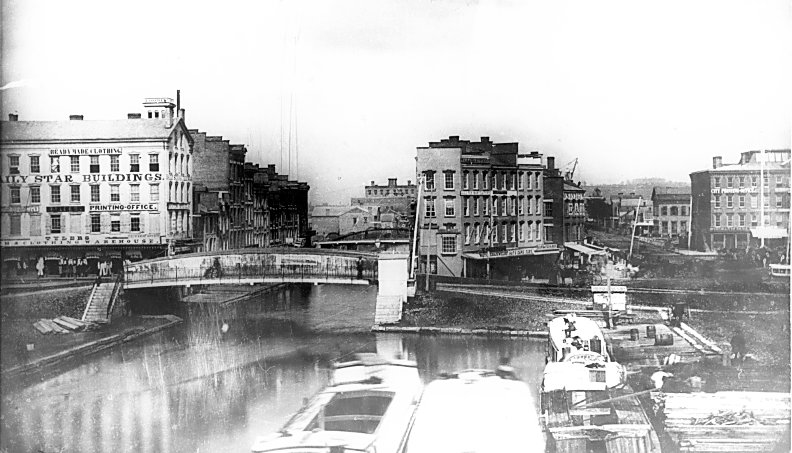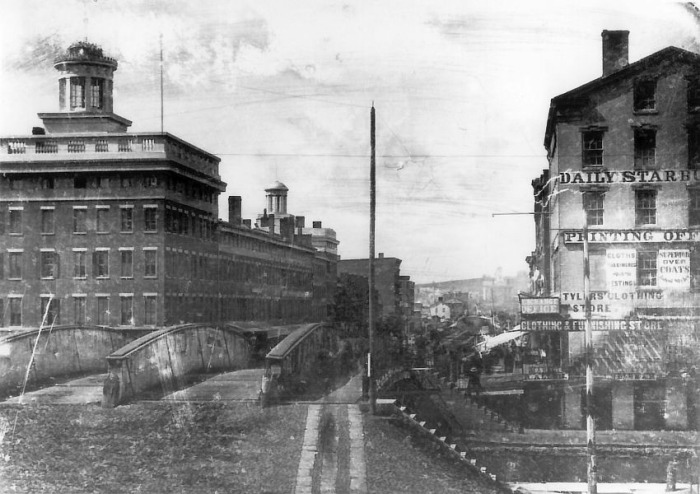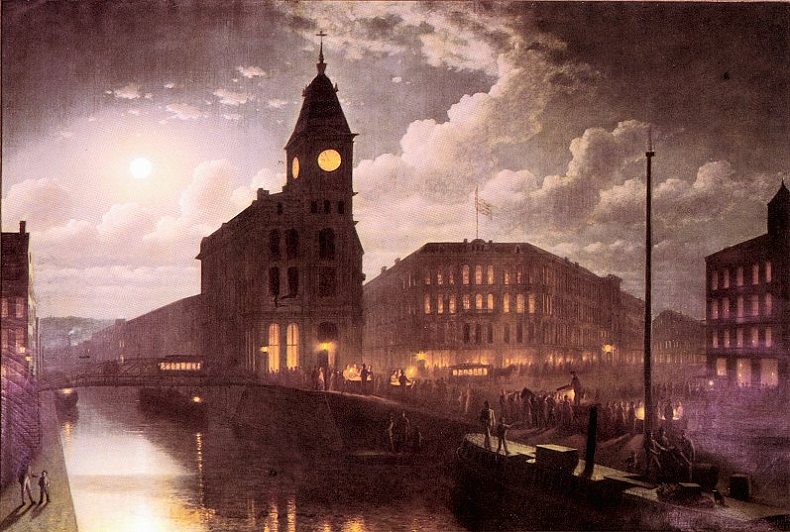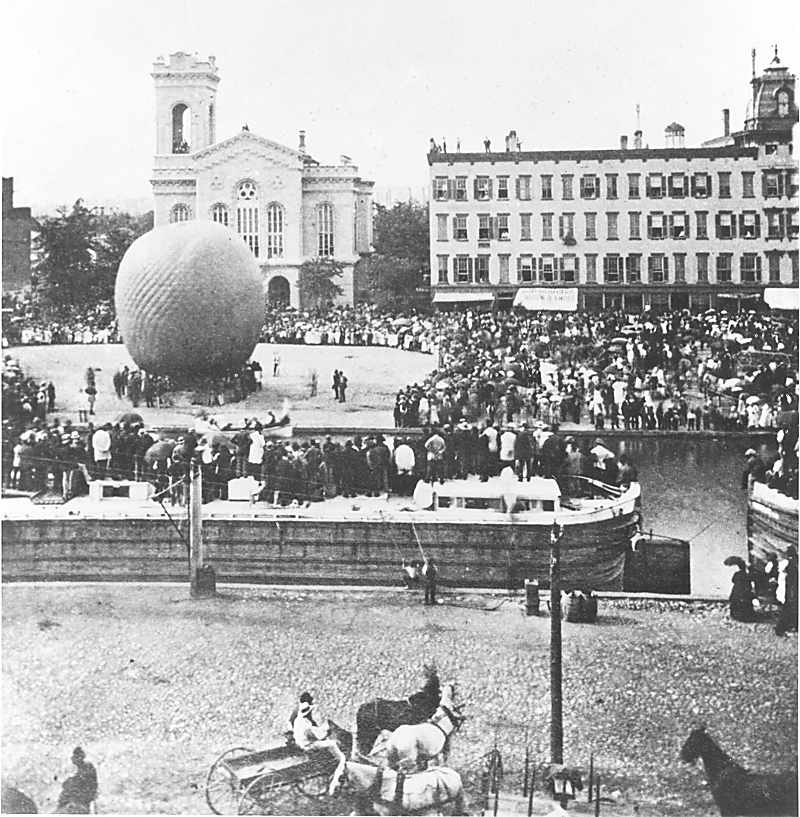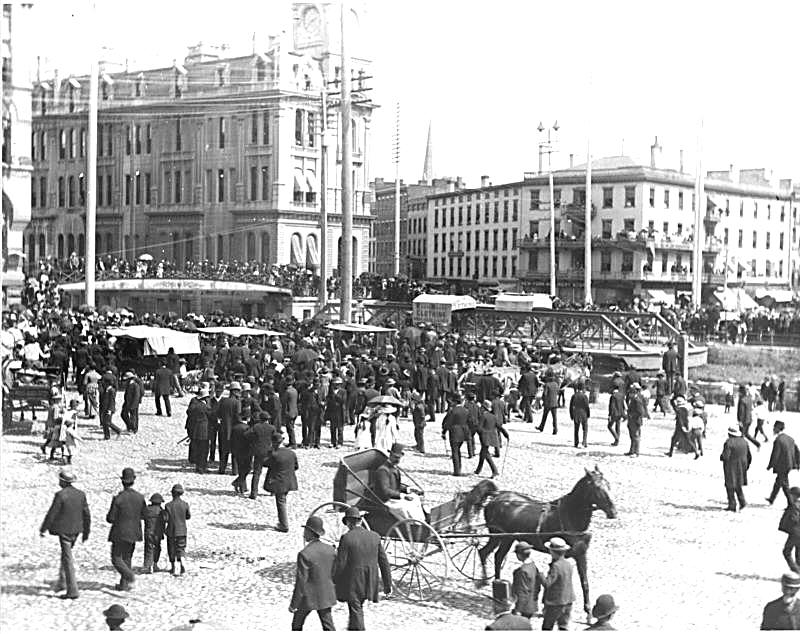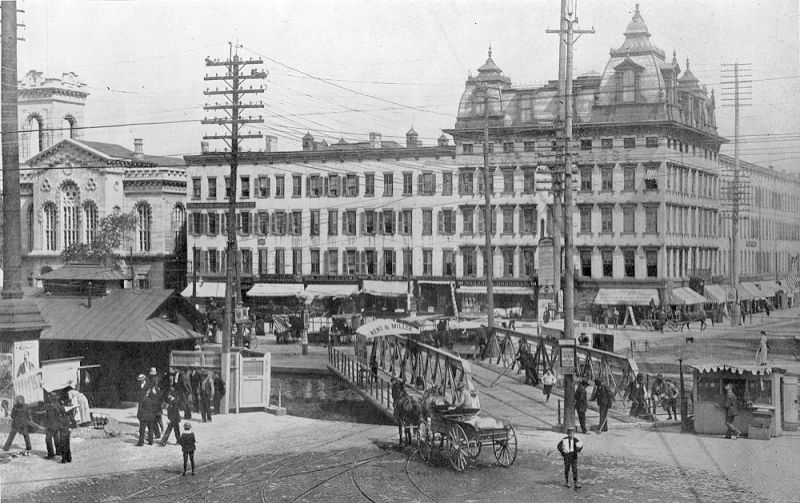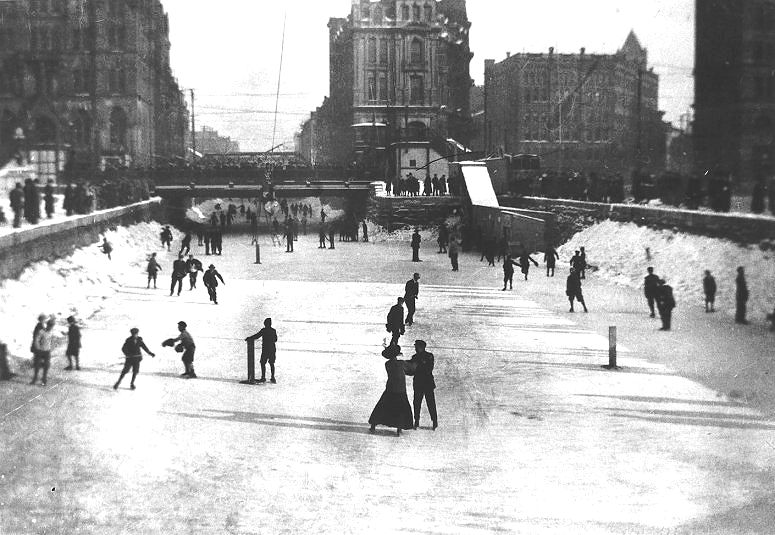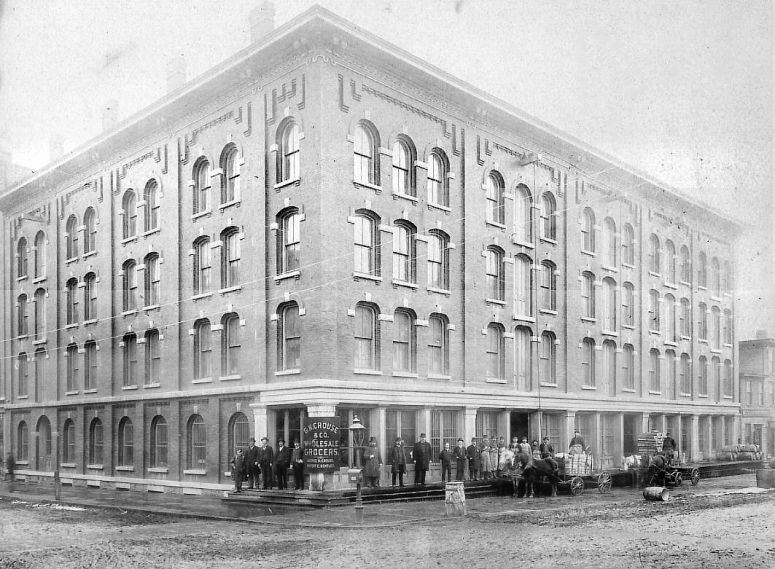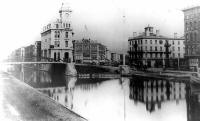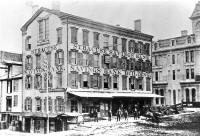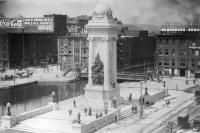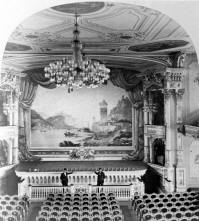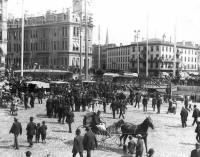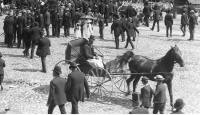|
Early Clinton Square |
|
In 1854 the Civil War was still seven years away. Henry David Thoreau had just published Walden. Elizabeth Cady Stanton, speaking on the need to expand legal rights for married women, was the first woman to ever addressed the New York State Legislature. 1854 was also the year an unknown photographer took this picture of Clinton Square.
Notice the Daily Star Building on the left above, the Star was an early newspaper in Syracuse. Looking at the building in the center, you can see how the Gridley Building would later adopted the same shape and orientation to the street as this building it replaced.
This photograph, looking north on Salina Street over the Erie Canal, was taken about the same time as the one above. The photographer must have been near where the Gridley building is today. The building on the right is the Daily Star again, where Fleet Bank (originally Syracuse Savings Bank) stands today. The building on the left is where the Syracuse Newspapers building now stands.
"Clinton Square by Moonlight," Johann Mengels Culverhouse, 1871. This oil paining shows Syracuse's bustling financial center just following the Civil War. Gas lighting had been installed in the Bastable Block (right center) only two years earlier. To see the original painting, visit the Onondaga Historical Association.
In 1871, Professor C.C. Coe, of Rome, brought his hot air balloon, called the New World, to downtown Syracuse for a race. In this picture, the balloon is resting where the Soldiers and Sailors Monument now stands. Hundreds turned out for the spectacle, probably including a young L. Frank Baum who lived in Syracuse at that time. This may have been Baum's inspiration for the hot air ballooning professor who became the Wizard of Oz.
In this 1890 photo, the carriage and driver at the front are near where the Soldiers and Sailors monument would be today. The first Onondaga Savings Bank building (the Gridley Building) is now present at center-left. The second Onondaga Saving Bank has yet to replace the building at the right. Unlike the earthen ramp of the first picture leading to an elevated but stationary bridge over the canal, the Salina Street bridge is now a drawbridge and closer to street level when closed. Notice the spire of St. Paul's visible in the distance at center.
Here is a better view of the revolving bridge that
spanned the canal connecting North and South Salina in the 1890s. This
picture was been taken from where the Onondaga Savings Bank (M&T Bank)
is today.
A gathering of sleighs in a
snowy Clinton Square prior to building of the new Onondaga Savings Bank,
about 1890.
Skating on the frozen canal in Clinton Square, about 1900
Here you see the "G. N. Crouse Wholesale Grocery,"
and employees, at the southwest corner of Clinton and Water. This
picture was probably taken about 1890. The new Federal Building occupies this
entire block today. More Early Clinton Square Photos
|
